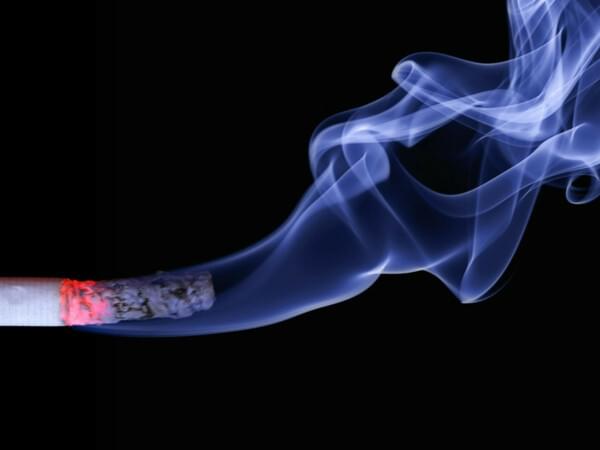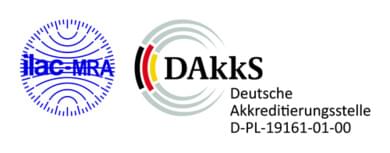Asbestos in a cigarette butt: a special caper of the tobacco industry - our contribution to World No Tobacco Day
It is well known that smoking causes cancer. But did you know that some cigarettes even used to contain asbestos? You read that correctly: The same substance that is now strictly forbidden and for which there are strict rules on handling and disposal during renovation work was once in cigarette filters – as a supposed health promise! Welcome to the world of the tobacco industry, where marketing is often more important than human lives.
How asbestos filters once made cigarettes even more dangerous

In the 1950s, the US cigarette brand Kent responded to the growing fear of lung cancer with a new “safety feature”: the Micronite filter. This supposedly “lung-friendly” and “taste-improving” cigarette filter was supposed to protect the smoker, according to the advertising promise.
The filters consisted of crocidolite fibers, also known as blue asbestos, in crinkled crepe paper. This is a particularly dangerous type of asbestos. This is because crocidolite fibers are shorter, thinner and more fragile than the chrysotile asbestos used for most applications.
Back then, the Lorillard Tobacco Company marketed the Kent Micronite filter as a high-tech safety feature. Today, however, this brand is remembered as one of the most dangerous types of cigarettes ever produced. Smokers of these cigarettes were not the only ones at significant risk of developing lung cancer, mesothelioma, laryngeal cancer, ovarian cancer, or asbestosis. There was also an unusually high cancer mortality rate among cigarette factory workers. The Spiegel article “Cancer deaths from cigarette filters” from December 10, 1989 states: "Of the total of 33 employees who had daily contact with the seemingly harmless filter paper during this period, 28 have already died, more than three times as many as would have been expected according to the general cancer statistics. The doctors have also already diagnosed three of the five survivors with cancer."
Smoking + asbestos = increased health risk
Even if you don't put asbestos in your mouth in the form of a cigarette filter, the pollutant is much more dangerous for smokers than for non-smokers. Smoking damages the lungs and puts a strain on the immune system. If you are also exposed to asbestos, the risk of cancer increases significantly. While asbestos damages the lungs in the long term and is the basis for serious illnesses, smoking ensures that these illnesses occur more quickly and more aggressively. As smoking further attacks the lungs, they have little chance of recovering or fighting off asbestos fibers.
World No Tobacco Day 2025 warns of the tobacco industry's tricks
May 31st is World No Tobacco Day. This day of action was launched in 1987 to draw attention to the dangers of smoking and raise awareness of the global epidemic of tobacco consumption. This year, the focus is on the harmful practices of the tobacco industry.
Common tactics include:
- the use of flavors and additives to improve taste
- marketing strategies using sleek design and digital campaigns
- products that look like candy to target a young demographic
With these practices, the tobacco and nicotine industry promotes consumption, makes quitting more difficult, and increases the risk of addiction. For electronic cigarettes in particular, there are insufficient regulations in Europe to prevent targeted marketing to young people. Accordingly, the consumption of nicotine products such as electronic cigarettes and nicotine pouches is increasing among young people.
Conclusion: Be smart, don't start
If you want to increase your chances of a long and healthy life, you should avoid tobacco products. Every cigarette smoked shortens your life expectancy by a few minutes. Smokers who work with asbestos are particularly at risk - at least if they do not work carefully by the strict regulations. Whether a smoker or not, responsible, safe handling of the building pollutant is always important. The following therefore applies to planned construction work in buildings potentially contaminated with asbestos: first test for asbestos, then get started, taking the necessary safety precautions.
Sources for further reading:
- WHO: World No Tobacco Day 2025: exposing the stimulus | https://www.who.int/europe/de/news-room/events/item/2025/05/31/default-calendar/world-no-tobacco-day-2025--unmasking-the-appeal
- Spiegel.de: “Cancer death from cigarette filters” | https://www.spiegel.de/wissenschaft/krebstod-aus-zigarettenfiltern-a-be461a9a-0002-0001-0000-000013497706
- Asbestos.com: “Asbestos Cigarette Filters” | https://www.asbestos.com/products/cigarette-filters/
- Company physician Dr. Walter Russ: Working with asbestos | https://www.betriebsarzt-russ.de/aktuelles/artikel/arbeiten-mit-asbest.html


